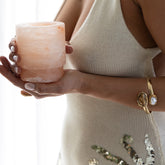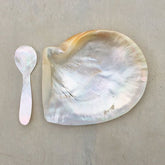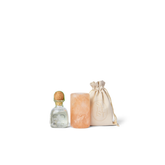Behind the Scenes: How Tequila Is Made
Tastes great, right? Well, this tasty beverage is actually a very complicated spirit made of dozens upon dozens of ingredients. Tequila may be one of the most diverse spirits in the world (literally), but who knew it started out so humble? This article takes a good look behind the scenes at how tequila is made.
First, let's delve into the history of this Mexican spirit. Tequila is a distilled beverage with a rich and storied past. It was first made by the Aztecs in Mexico as early as 1400 AD, and it was used for ceremonial purposes only. The word "tequila" comes from an Aztec word meaning "place where we have a drink."
Then, it was commercialised to the world by Spanish Conquistadors in 1521. They were amazed by the drink's ability to get people drunk and motivated them to take over Mexico. The Spaniards who lived in Mexico for nearly 300 years were inspired to make their own version, which was called mixto -a mix of agave juice, sugar cane and yeast.
Tequila sales have grown by 30% over the past year and in 2021 generated 5.2 billion dollars in sales, according to the Distilled Spirits Council of the United States. And, whilst sales have grown, consumers are increasingly expressing their curiosity in how proper care and time greatly affect the craftsmanship of tequila.
What is Tequila Made of: A Step by Step Guide
Tequila is made from agave plants, which grow in arid and semiarid regions of the Americas particularly Mexico and the Caribbean. Although agave plants cultivate in these places, most blue agave plants prefer higher altitude and can be mostly found in Jalisco state in Western Mexico.
Step 1: Harvesting. According to Gace Gonzalez, the fourth-generation master distiller from Destiladora González Lux, Agave plants are harvested when they are five to seven years old. However due to unforeseen climate change, the process of waiting for the plants to grow can be sometimes unsuccessful. It has never been easy. But with experience and their skill of successfully picking agaves by the jimadores (tequila farmers), making tequila has always been personal.
They use a coa. A traditional type tool used to chop off the leaves of the agave. It looks simple like a machete but its efficiency has withstood the test of time. It cuts off the spiny leaves which separates it from the core of the plant called a piña- containing the sweet agave nectar used for fermenting alcohol.
Step 2: Distillation. After harvesting, the plant is cooked to remove its inner core, "The agave plants are taken to our distillery to cook in our brick oven for three days. Once we have extracted all the sugar from the agaves, we proceed to crush them to extract even more sugars and juice," described by Carlos Andrés Ramirez, the brand advocacy manager for Tequila Avión. Distillation creates pure alcohol out of the mash—and also gives us tequila. Fermentation lasts for 48 hours where the yeast and the sugar combined will turn into alcohol. Once it has reached 7%, it will be once again distilled.
Once distilled, tequila undergoes two more processes: Ageing and filtering.
Step 3: Ageing and filtering. The ageing process takes place in oak barrels or other barrels that have been charred on their inside surfaces (this creates colour), which gives tequila its distinctive flavour and aroma. The aging depends on the type of tequila being made. For Blancos, it can be up to two months old while an añejo will age for at least three years.
After the ageing process, the tequila goes through a second filtration process before being bottled for sale.
The process can be tricky, but there's no denying the process of hard work that was put into making it. A shot of tequila is after all a perfect way to unwind after a long day…. And no better way to do it than with Saltist! Salude!



















